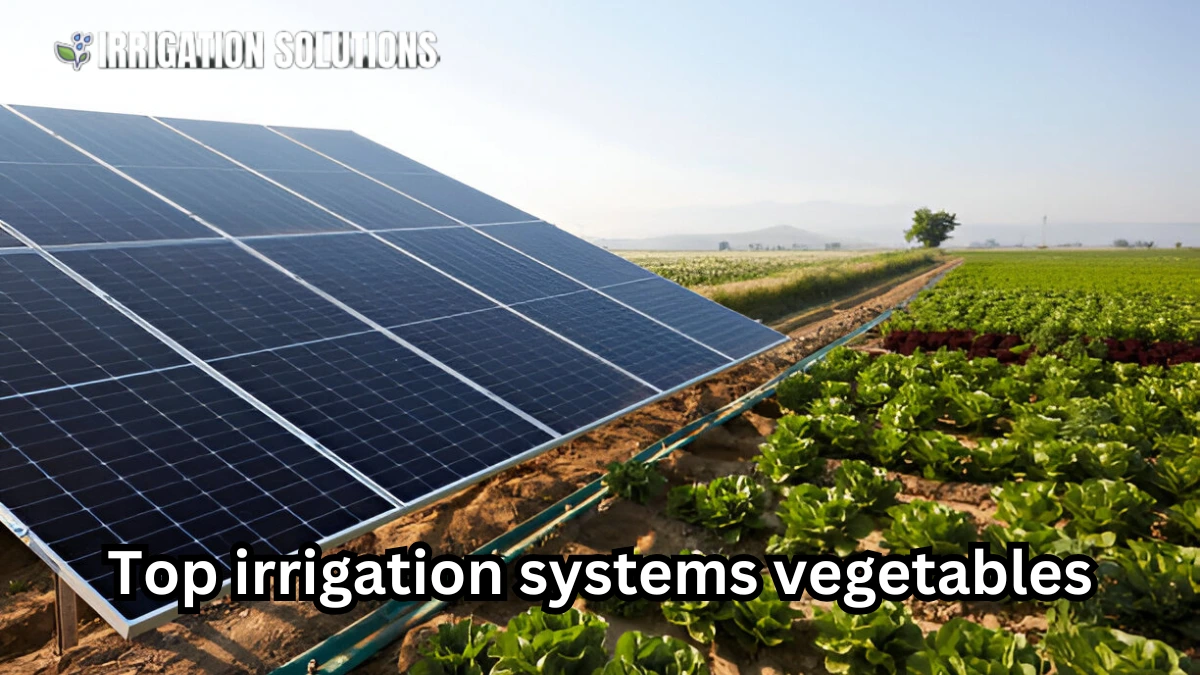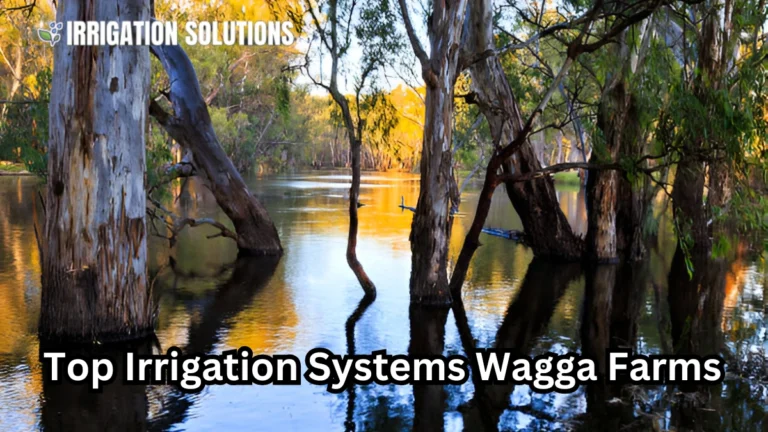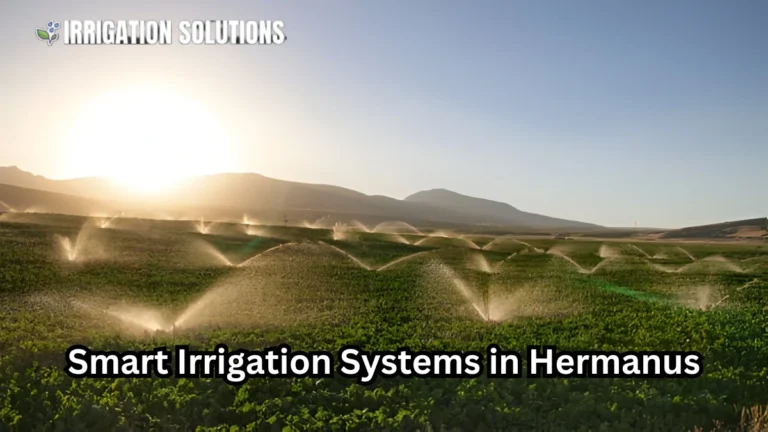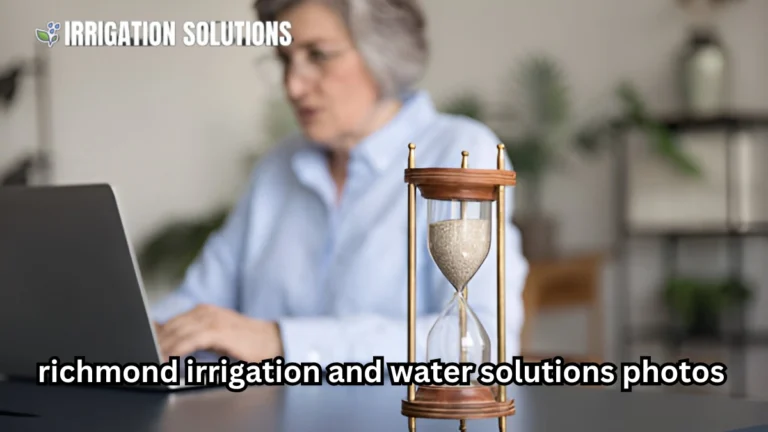Top irrigation systems vegetables

When it comes to growing vegetables, water is one of the most essential resources. Without it, crops won’t thrive. But it’s not just about water – how you deliver it to your plants matters too. That’s where irrigation systems come into play. Whether you’re a home gardener with a few backyard beds or a large-scale vegetable grower, selecting the right irrigation system can make or break your harvest. In this guide, we will explore everything you need to know about irrigation systems for vegetables, including types, benefits, and best practices.
Why Irrigation Systems Matter for Vegetable Gardens
In vegetable farming, consistency and efficiency in watering are crucial. Here’s why:
- Efficient water usage: Vegetables, like tomatoes, lettuce, and peppers, need specific amounts of water. Over watering or under-watering can lead to poor plant health, increased pest problems, or poor yields. An irrigation system ensures that your crops receive the right amount of water at the right time.
- Time and labor savings: Hand-watering can be time consuming, especially if you have a large garden. An irrigation system automates the process, saving you hours of work.
- Healthier crops: Consistent watering promotes better plant growth. Water stress can hinder the plant’s ability to produce fruit or vegetables.
- Conserving water: A well-designed irrigation system helps conserve water by targeting the root zones and preventing evaporation, which is essential in drought prone areas.
Common Types of Irrigation Systems for Vegetables
Irrigation systems come in various designs, each suited to different types of vegetable gardens. Let’s take a look at the most common options:
Drip Irrigation Systems
Drip irrigation is one of the most efficient and widely-used methods. This system delivers water directly to the base of plants, minimizing waste and evaporation. It consists of a network of tubes, emitters, and filters that slowly drip water at the roots.
- Pros:
- Highly efficient; reduces water wastage.
- Helps prevent weed growth by not watering the entire soil surface.
- Ideal for row crops and garden beds.
- Cons:
- Initial setup costs can be higher than other systems.
- Requires regular maintenance (checking for clogs in emitters).
Example use: Drip irrigation is great for crops like tomatoes, carrots, and lettuce that benefit from consistent, targeted watering.
Sprinkler Irrigation Systems
Sprinklers mimic natural rainfall by spraying water over plants, covering a larger area. They can be stationary or oscillating, depending on the layout of your garden.
- Pros:
- Covers large areas quickly.
- Works well for garden beds and lawns.
- Cons:
- Higher water waste due to evaporation and runoff.
- Less effective for deep watering of root crops.
Example use: Sprinkler systems work well in vegetable gardens with crops like cabbage, beans, or corn that have shallow root systems.
Soaker Hoses
Soaker hoses are a simpler form of irrigation. These hoses are made of porous material, allowing water to seep out slowly along their length. You lay them on the soil surface, where they provide deep watering to the plants’ roots.
- Pros:
- Easy to install and maintain.
- Perfect for row planting.
- Cons:
- Less efficient than drip irrigation.
- May not work well for uneven or large garden layouts.
Example use: Great for vegetable rows where you can place hoses between the plants for even watering.
Subsurface Irrigation
Subsurface irrigation involves placing pipes or tubing below the soil surface. Water is delivered directly to the root zone, promoting deep root growth.
- Pros:
- Highly efficient, reducing water evaporation.
- Ideal for crops requiring deep roots like root vegetables.
- Cons:
- Expensive to install.
- Needs a well planned system for even distribution.
Example use: Best for root vegetables like potatoes, carrots, and beets.
Factors to Consider When Choosing an Irrigation System
Choosing the right irrigation system for your vegetable garden involves considering a few critical factors:
- Garden Size: A small garden might only need a simple soaker hose or a few sprinklers. But a large scale vegetable farm may require an extensive drip irrigation setup or subsurface system.
- Water Source: Are you using municipal water, well water, or rainwater harvesting? Your water pressure and availability will influence your choice of irrigation system.
- Soil Type: Sandy soils drain quickly, while clay soils retain water. If you have sandy soil, you’ll need a system that delivers water slowly. If you have clay soil, consider a system that prevents waterlogging.
- Climate: In hot, dry climates, drip irrigation is ideal due to its water conserving nature. In more humid areas, sprinkler systems may be sufficient.
- Crop Types: Different crops require different watering methods. For instance, leafy vegetables like spinach prefer a shallow, even watering system, while root crops require deeper watering.
How to Set Up an Irrigation System for Your Vegetables
Setting up an irrigation system is an investment in the health and efficiency of your vegetable garden. Here’s a step-by-step guide to installing a basic drip irrigation system.
Materials You’ll Need:
- Drip tubing
- Emitters
- Filters
- Pressure regulators
- End caps
- Connectors and stakes
Installation Steps:
- Plan Your Layout: Map out your garden and decide where the tubing will go. Identify the water needs of each vegetable to determine where emitters should be placed.
- Prepare the Water Source: If you’re using a rainwater collection system or well, make sure your water pressure is sufficient. Install a filter and pressure regulator to prevent clogging and ensure consistent flow.
- Lay the Tubing: Run the tubing along your rows or beds. You may need to use connectors to extend the lines to different parts of the garden.
- Place the Emitters: Position the emitters close to the base of each plant. For larger plants, use emitters with a higher flow rate.
- Test the System: Turn on the system and observe the water distribution. Adjust emitters and tubing as needed to ensure even coverage.
- Maintain the System: Regularly check for clogs, leaks, or any other damage. Clean the filters and check water pressure at least once a season.
Tips for Optimizing Your Irrigation System
To make sure your irrigation system works at its best, consider these tips:
- Water Early or Late: Water your vegetables early in the morning or late in the evening to prevent water evaporation during the hottest parts of the day.
- Monitor Soil Moisture: Over-watering is just as harmful as under-watering. Use a soil moisture sensor to track when your garden needs water.
- Use Mulch: Applying mulch around your plants can help retain soil moisture, keeping the roots hydrated for longer periods and reducing irrigation frequency.
- Adjust System Based on Weather: Be mindful of the weather and adjust your irrigation schedule during rainy periods to conserve water.
The Future of Irrigation Technology
As water scarcity becomes more of a global issue, innovative irrigation systems are emerging to address these challenges. Here are some of the advancements you might see in the future:
Smart Irrigation
Smart irrigation systems use weather data, soil moisture sensors, and real time analytics to determine the precise amount of water your garden needs. These systems adjust automatically based on current weather conditions, reducing water waste.
Automated Drip Systems
Automated systems can be controlled via smartphone apps, allowing you to monitor and adjust watering schedules remotely. Some systems can even connect to local weather stations to optimize watering times and durations.
Rainwater Harvesting Systems
As environmental awareness grows, many gardeners are turning to rainwater harvesting systems to supplement their irrigation needs. These systems collect rainwater from rooftops, storing it in tanks for use in irrigation.
Common Irrigation Problems and How to Solve Them
No irrigation system is perfect, and problems are bound to arise. Here are some common issues and how to fix them:
- Clogging: Over time, emitters can get clogged with debris. Regular cleaning of filters and emitters is key to preventing this.
- Leaks: Leaking pipes or tubing can lead to water wastage. Inspect your system periodically and replace damaged components promptly.
- Uneven Watering: If your plants are getting too much or too little water, check for blockages, leaks, or issues with pressure regulation. Adjust emitter placement as needed.
Conclusion
Choosing the right irrigation system is crucial to growing healthy, high yielding vegetable crops. Whether you opt for drip irrigation, sprinklers, or soaker hoses, ensuring that your plants receive consistent, efficient watering is key. Consider the size of your garden, the types of vegetables you’re growing, and local climate conditions when making your choice. With the right system, you’ll save time, conserve water, and improve the overall health and productivity of your vegetable garden.
By following the tips and practices outlined in this guide, you’ll be well on your way to mastering irrigation and growing a bountiful vegetable garden for years to come. Happy gardening!






